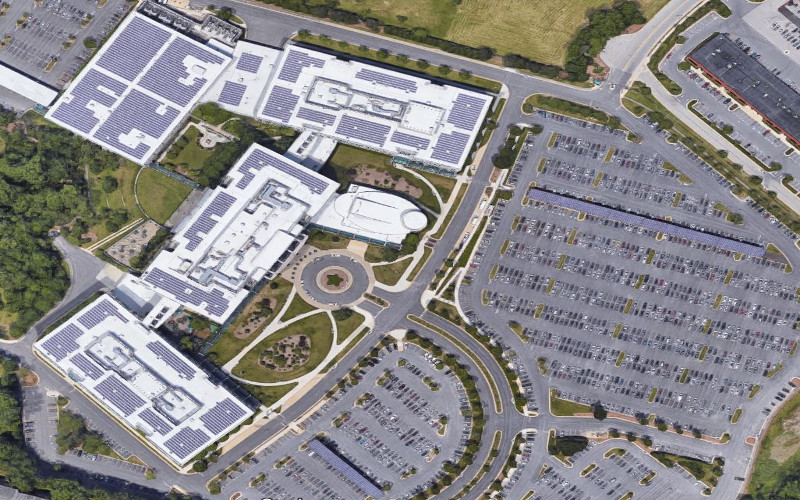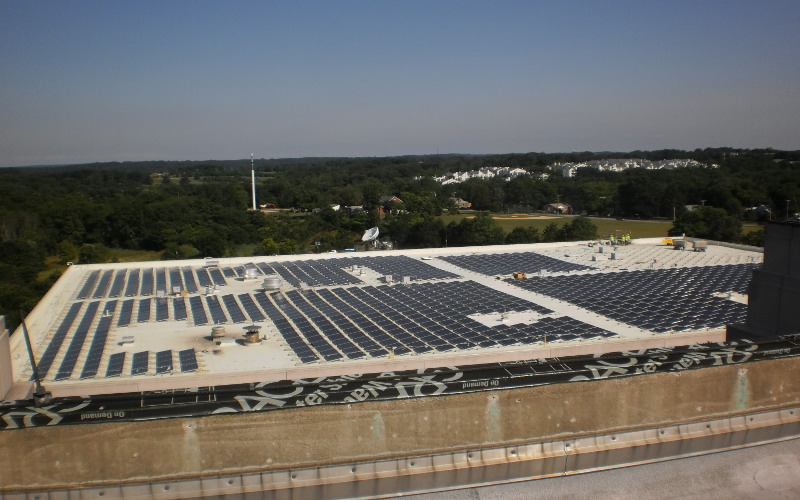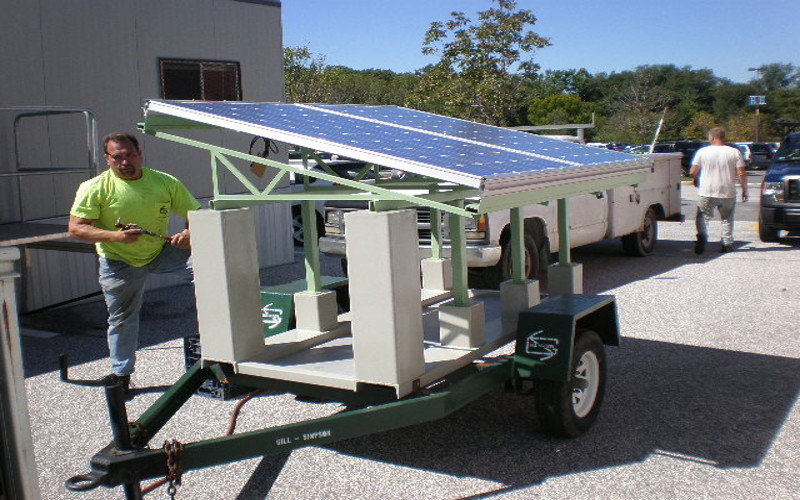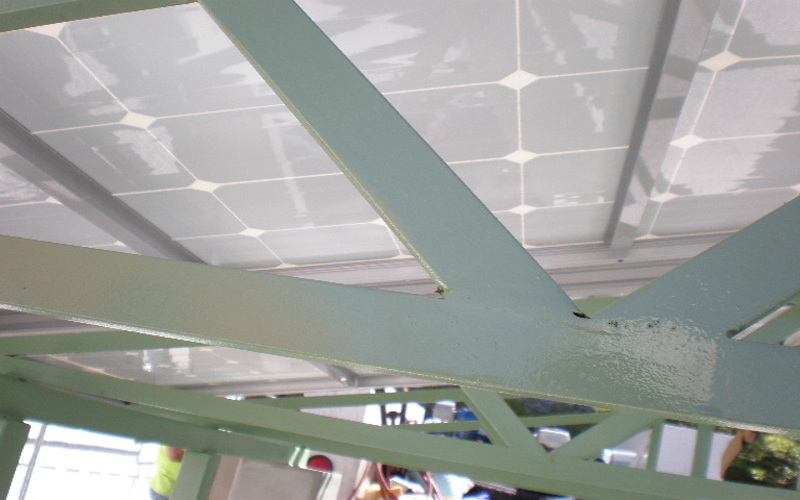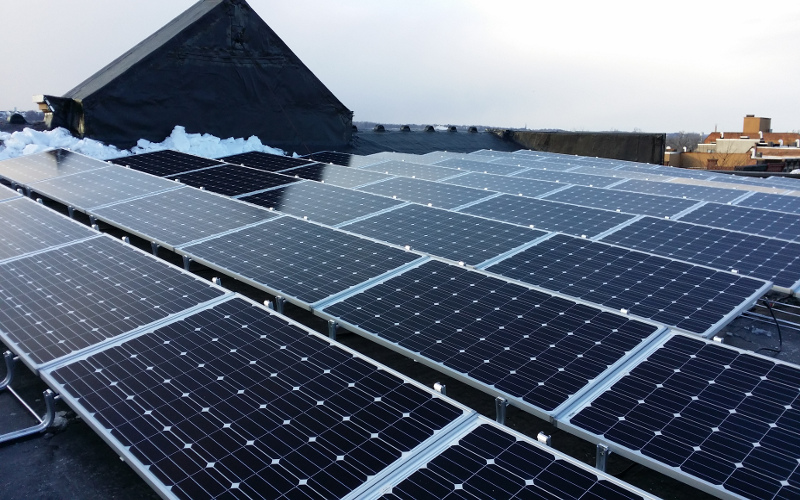Project Description
Project Name
Campus Rooftop/Canopy Solar PV
Location
Center for Medicare & Medicaid (CMMS), Maryland
Challenge
Architecturally Integrated Solar PV
Description:
The sprawling Centers for Medicare and Medicaid Services (CMS) campus, located in Woodlawn, Maryland, is a branch of the federal government’s Department of Health and Human Services (HHS). About 2,700 employees work at the 57-acre CMS campus that consists of four major interconnected buildings combining for over one million square feet of office and warehouse space that includes a major data center.
The real property owner of the CMS campus, the U.S. General Services Administration, (GSA) initiated an energy efficiency overhaul of the campus that included roof repairs and the installation of a major 1.1 MW solar photovoltaic (PV) project consisting of integrated rooftop arrays and canopy systems. Rooftop solar arrays were coordinated with roof repairs and were used on all major campus rooftops (see satellite image above). The canopy arrays were installed on newly installed covered walkways with design elements that match building aesthetics with architecturally integrated solar panels and feature innovative inverter housings that were architecturally integrated into attractive canopy columns.
The project was competitively bid through a federal government sealed bidding process that requires least-cost-based contractor selection. The contract was awarded to Chevron USA Inc., with whom PowerSurety principles were employed at the time. Primary challenges in responding to the solicitation were, 1) designing architecturally integrated solar with visually pleasing walkway canopies while remaining cost-competitive, and 2) synchronizing phased roofing replacement work with rooftop solar array installation. PowerSurety staff participated in the extensive 3-D CAD canopy design process, rooftop array layouts, Leadership in Energy and Environmental Design (LEED) planning, equipment selection and sourcing, bid pricing, construction management, system commissioning, and start-up.
The extensive PV arrays are among the GSA’s five largest installations and produce energy that earns solar renewable energy certificates (RECs) that are sold to the local utility and credited on GSA’s utility bill. As the result of a significant design effort that led to optimizing rooftop coverage and module orientations, GSA benefits from a greater quantity of REC credits than the original system design would have been capable of generating.
Project requirements also included assisting GSA in preparing for initial building certification under the U.S. Green Building Council’s (USGBC) LEED Existing Buildings (EB) 2.0 program. In addition to the PV arrays, the project also included a new high efficiency roofing system and electrical system upgrades to improve building energy usage and efficiency. Recycled rubberized paver “bricks” were also used as landscaping elements of the canopied walk-ways, which additionally augmented LEED points. In its entirety, the project was instrumental to GSA in its accumulation of points sufficient to successfully qualify the campus for the LEED EB ranking.
The entire PV system’s design was based upon a multi‐purpose 235-watt monocrystalline solar module with a 25‐year limited manufacturer warranty on power output. The estimated annual energy production of the rooftop and canopy PV systems was estimated initially at >1,101,046 kWh. Design modifications incorporated during pre-construction increased production output on some portions of the project by 20%. Each PV system is interconnected to the respective building on the 480V side of the building substation with solar metering and controls interconnected to the existing building supervisory control and data acquisition (SCADA) system.
Proposed Project Features
400 kW DC Roof Mounted PV
480 kW DC Canopy PV
SCADA
Siemens Power Quality Metering
Canopy Column Integrated Inverters
Recycled Paver Walkways


